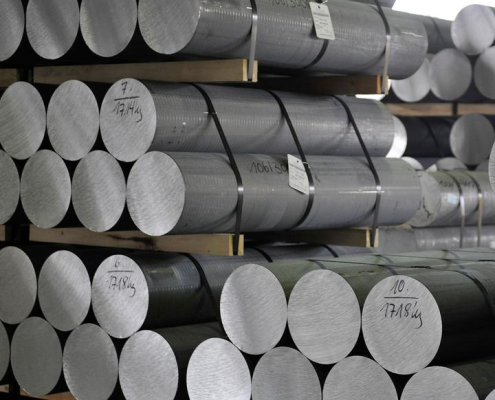Nimonic90 is a time-strengthened nickel-based high-temperature alloy containing high cobalt and various strengthening elements. NIMONIC 90 Alloy has high-temperature strength, creep resistance, corrosion resistance, and oxidation resistance, and is suitable for high-demand applications such as aerospace, gas turbines, chemical processing, and nuclear industry.
Nimonic 90 (N07090) is an age strengthened nickel-based deformation high-temperature alloy containing a high amount of cobalt and various strengthening elements. Its main chemical components are as follows: nickel (Ni): about 53% -57%, chromium (Cr): about 18% -21%, cobalt (Co): about 15% -21%, iron (Fe): up to 1.5%, titanium (Ti): about 2% -3%, aluminum (Al): about 1.2% -1.8%, carbon (C): up to 0.13%, silicon (Si): up to 0.50%, manganese (Mn): up to 0.50%, sulfur (S): up to 0.015%, phosphorus (P): up to 0.02%.

physical property
NIMONIC 90 Alloy Density: 8.18-8.19 g/cm ³
Melting point: approximately 1315-1370 ° C
Thermal conductivity: 21.76 W/(m · K) (100 ° C)
Linear expansion coefficient: 12.2-12.7 μ m/m ·° C (20-100 ° C)
Elastic modulus: 213-240 GPa (0.2% offset)
Rigid modulus: 82.5 GPa
Mechanical performance
Tensile strength (σ b): ≥ 820 MPa (solution treated)
Yield strength (σ p0.2): ≥ 590 MPa (solution treated)
Elongation rate (δ): ≥ 8% (solid solution treatment)
Brinell hardness (HBW): 441 (solution and aging treatment)
Metallographic structure
The main strengthening phase of Nimonic 90 alloy is γ ‘- Ni3 (Ti, Al), which precipitates in square particles of different sizes within the crystal. This shape of γ’ phase can also be seen at grain boundaries, and carbides precipitate in discontinuous chain-like patterns at grain boundaries.
Melting process
Induction melting and electric slag remelting: Induction melting is performed first, followed by electric slag remelting to ensure uniformity of composition and reduce impurities.
Vacuum induction melting and electric slag remelting: Induction melting is carried out in a vacuum environment, followed by electric slag remelting to further improve the purity of the material.
Vacuum induction melting and vacuum arc remelting: Induction melting is carried out in a vacuum environment, followed by vacuum arc remelting to ensure high purity and performance of the material.
Vacuum induction melting: NIMONIC 90 Alloy Directly conducting induction melting in a vacuum environment, suitable for applications that require extremely high material purity.
